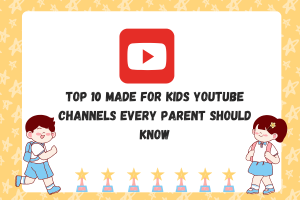How to Revolutionize Customer Engagement with Technology in Business Operations

A business’s success depends heavily on efficient customer engagement, but it is not without limitations. And when it comes to actually doing it, businesses cannot completely depend on traditional methods. They need a plan and some sort of helping hand to get through it, and that’s where technology comes into play.
As of now, perhaps because of that, businesses are now looking to revolutionize their engagement with customers and keep up with the competition while doing it efficiently and effectively.
????Did you know? 56% of brands that developed formal customer engagement strategies reported exceeding their revenue goals in 2020. – Braze
In this article, we will provide an overview of customer engagement and its significance for business operations, as well as the challenges that companies face in engaging customers effectively, the technology that is used, and, lastly, some tips on how to improve it.
Let’s begin!
Also Read: How ChatGPT is Helping Companies Improve Sales and Marketing
What is Customer Engagement?
While many have a different understanding of Customer Engagement, its definition is a simple one and can be easily understood: it refers to the emotional, psychological, and behavioral connection that goes both ways between a business/brand and its customers or clients.
It is an ever-going, multifaceted process that focuses on building a loyal and everlasting customer base that goes far beyond just business transactions. Aside from that, it’s an intentional and consistent approach applied by a company to provide value at every customer interaction, which results in the improvement of the brand’s perception and boosts customer satisfaction.
Challenges Faced by Businesses in Engaging Customers Effectively
Having understood what Customer Engagement is, in true essence, you might think it’s an easy-to-do thing. Well, it’s not as easy as you think. To give you a clearer idea, here are some challenges that businesses face regularly in engaging with customers:
More competition
As the business landscape constantly changes, so is the competition to stay ahead, which has become more demanding than ever. Companies now find it more difficult to stand out as customers now have access to a huge range of products and services from a variety of different businesses.
Elevated customer expectations
Another challenge faced by businesses in customer engagement is the rising expectations of customers themselves. Businesses often fail to deliver personalized, fast, and efficient experiences to their customers and, at the same time, find it difficult to provide convenient access to their products and services.
Technological Changes
In addition to that, businesses also find it difficult to keep up with the rapidly changing technological trends in order to effectively engage with customers. It is still a burdensome task for many businesses to build a viable customer engagement plan that is well-suited to the demands of the modern audience.
Data privacy
Last but not least, another challenge that businesses find difficult to overcome is increased cyber attacks and data privacy issues. As of now, data thefts have become a common thing, and customers are increasingly concerned about their privacy; thus, businesses need to be careful about how they collect and use customer data.
Importance of customer engagement in business operations
From a business’s point of view, as said earlier, customer engagement is a strategy that is devised for the sole purpose of refining customer engagement. Having said that, it has its own importance and plays a pivotal role in shaping the way businesses operate regardless of their size or industry.
However, it is especially important for businesses that rely on repeat customers, such as e-commerce businesses and subscription-based businesses. Here are some key points to support this statement:
- Again, the biggest and most notable one is that it helps firms to connect with their customers and build a stronger relationship with them, resulting in a much more loyal customer base.
- Next, customer engagement empowers enterprises to improve their reputation, as one of its fundamentals is actively engaging with customers while getting reviews and feedback and delivering exceptional experiences in return.
- Following that, it also helps new and small businesses to reduce customer churn, as it involves active engagement, resulting in reduced operational costs, positive word of mouth for new customers from old ones, and, at last, an advantage over the competition.
- Another important perspective is that it eventually results in increased revenue. This is because engaged customers tend to spend more money, and they are also more likely to purchase additional products or services.
- Lastly, a business such as web application development sydney that follows all of the customer engagement strategies competently surely is prone to have a better emotional connection with its customers, which creates a susceptible environment that leads to adaptability, innovation, and growth of the business’s operations.
Technology for Customer Engagement
Now that you know what customer engagement is, what challenges businesses face in engaging customers effectively, and why it is important for business operations. It is time for you to know what types of technologies are used for efficient customer engagement.
To be clearer, technology for customer engagement also refers to digital tools that assist businesses and customers in establishing positive relationships. Here are some tools/pieces of tech that businesses utilize for befitting customer engagement-
- Customer Relationship Management (CRM) softwares to track customer interactions and preferences, which can be used to personalize the customer experience.
- Additionally, businesses also use Social Media Management softwares to manage their social media presence and engage with customers on social media platforms on the go.
- Likewise, to answer customers’ queries and resolve their pain points, businesses also use call center software for customer service. These kind of software helps you handle a large volume of customers’ calls and respond to their queries and resolve their issues faster.
- Moreover, businesses also use all-around customer support softwares to provide better and quicker support to their customers.
- Lastly, enterprises also use AI-powered chatbots to provide self-service to customers, immediate solutions to queries, and even generate leads.
Customer Engagement through Technology: Benefits
Thanks to the continuous evolution of technology, businesses now find it easier and simpler to establish good customer engagement strategies to deliver world-class customer service. And now that you know what technologies are used for customer engagement and in consideration of that, here are some benefits of using those:
- Delivering personalized service- A business that uses customer engagement technology already has tons of data about all of its customers, meaning it can deliver specific and personalized services.
- Added convenience- It surely brings up added convenience, as it makes it easier for businesses and customers to interact and relay information to each other, removing any communication gaps or errors.
- Better engagement- Another one of its benefits is the use of technology to create more engaging and interactive customer experiences while increasing customer satisfaction by providing contextual and timely assistance.
- Improved operational efficiency- Lastly, customer engagement through modern technology results in better delivery of services and empowers businesses to improve communication efficiency and streamline operations.
- Scalability and Future-proofing: Employing modern technological tools and software helps you transform your small business into a smart business. Compared to traditional methods, modern tools and technology offer a high level of flexibility to your customer service and can also be easy as your business grows. Also, the modern customer engagement tools keep themselves updated with the latest technological advancements. So it provides you a fair bit of future-proofing as well.
Tips for Revolutionizing Customer Engagement with Technology
Having discussed all that, there’s still a question to be answered, which is also the last point of discussion: how to actually revolutionize customer engagement with technology. To help your company with that, here are some specific tips that can prove to be vital in accomplishing that task:
Use Cloud Telephony for Better Customer Interactions
Cloud phone systems are innately a revolution themselves and offer a number of advantages to businesses when compared to traditional telephony systems. Some of its own benefits include greater scalability, flexibility, and cost-effectiveness that are a result of its unique features like call trees, automated responses, and unified callbox. Businesses can implement and make the most of a cloud phone system for sales teams to provide a more seamless and customized customer experience.
Implement Chatbots for 24/7 Customer Support
Next up, technological marvels like automated chatbots can be implemented to provide 24/7 assistance to customers even outside of business hours. Furthermore, these tools can enhance business efficiency, boost productivity, and reduce response times while giving businesses a major advantage in a world full of competition.
Leverage Social Media for Customer Engagement
Another tip that is a must-follow one is leveraging the power of social media. Businesses like yours can utilize social media platforms like Facebook, Twitter, or Instagram to proficiently interact with their customers and build a recognizable brand reputation. At the same time, businesses can use social media to provide customer support and run marketing campaigns.
Use CRM Software for Better Customer Insights
Using Customer Relationship Management (CRM) software can help businesses to get a better understanding of their customers’ as well as their needs. This softwares can be used to track customer interactions, history, and preferences, which can then be used to personalize customer communications and provide a more tailored customer experience.
Final thoughts
To sum it up, customer engagement is not a choice but a necessity for modern businesses. While it can present a variety of challenges to businesses regardless of their type, size, or industry, there surely are some ways by which businesses can deliver it exceptionally and revolutionize it. And as the business landscape continues to evolve, companies must harness the power of technology to build stronger, lasting connections with their customers.
FAQs
How has technology enhanced customer experience?
Customers can find exactly what they are looking for through technology, as it can provide personalized recommendations and other benefits. Here are some specific examples of how technology has enhanced customer experience-
- Technology makes it easier for businesses to interact with their customers.
- With technology, businesses can create a personalized experience for their customers.
- Businesses can become more efficient with the help of technology.
- It is possible for businesses to reach new customers by incorporating new technological tools into their customer engagement plans.
How can technology add value to business?
There are many ways by which technology can add value to businesses. While the list is long, here are some notable examples:
- Streamlined workflows and improved communication and collaboration through various means of collaborative tools.
- Improved productivity and efficiency of business operations and reduction of overhead business expenditures.
- Technology can also help businesses to improve customer service by providing customers with more convenient ways to interact.
- Lastly, businesses can also expand into new markets by utilizing virtual phone systems and creating a local presence.
What is the technological engagement strategy?
A technological engagement strategy is a plan for how a business or organization will use technology to connect with its customers, employees, and other stakeholders. It involves the following steps:
- Defining clear objectives and the target audience.
- Identifying the right technological tools for engagement.
- Delivering personalized customer experience.
- Using CRM and other software for the betterment of service delivery.
- Measurement of the success of the strategy.
- And lastly, automation of tasks.
What technologies are used in customer service?
Some examples of technological tools that are widely used in customer service are:
- Real-time live chat through various platforms
- AI-powered chatbots to provide 24/7 assistance
- Help desk and knowledge base softwares to deliver efficient customer service
- Interactions through social media and video conferencing
- Virtual assistants & IVR to provide solutions to common issues.






